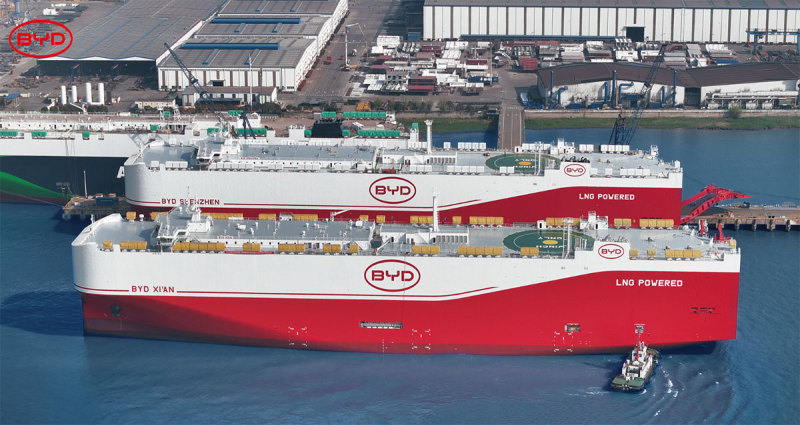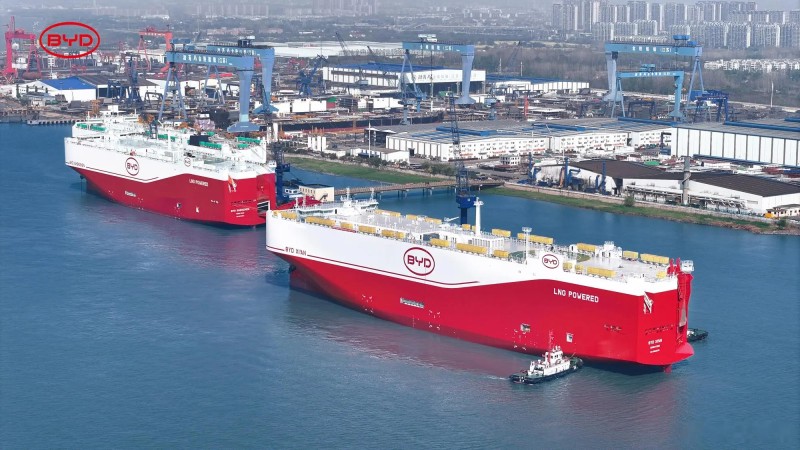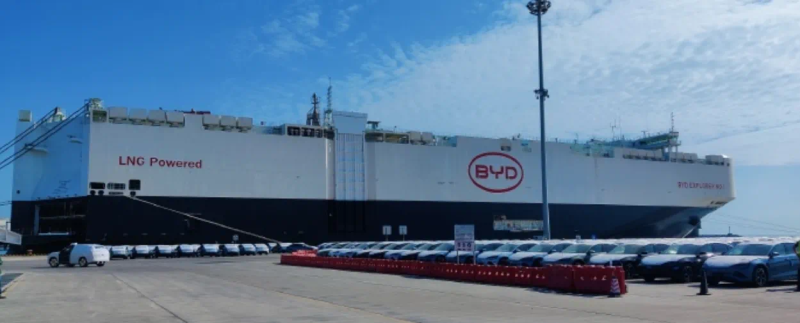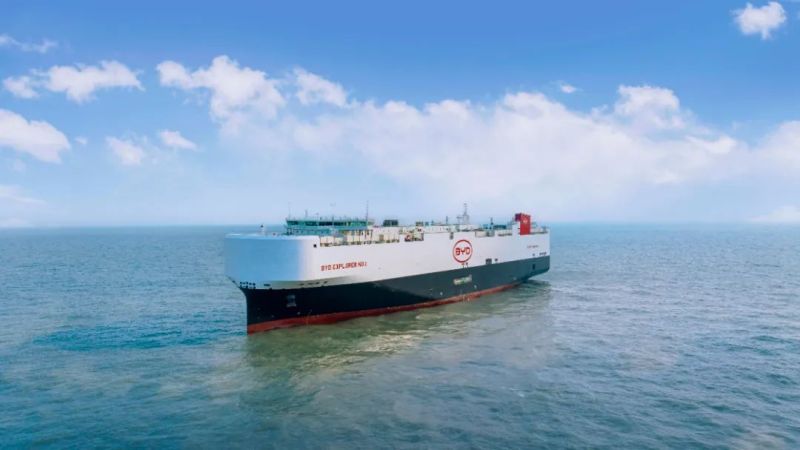BYD's 6th Car Carrier 'XI'AN' Sets Sail - Fleet Power Grows
 WilliamApr 03, 2025, 05:33 PM
WilliamApr 03, 2025, 05:33 PM
[PCauto] On April 2, BYD officially took delivery of its sixth car carrier roll-on/roll-off ship, the "Xi'an," which was built and leased by CIMC Raffles, continuing the naming convention based on production bases.

In addition, what attracts more attention is that the world's largest car RoRo ship "Shenzhen" is about to embark on its maiden voyage. The total length of"Shenzhen" is 219.9 meters long and the capacity of it is 9,200 vehicles. It adopts liquefied natural gas (LNG) dual-fuel power, self-developed box battery pack and shaft generator and other green technologies. It is one of the most environmentally friendly RoRo ships in the world. Although its maiden voyage has no specific destination, BYD's previous ships mainly served European routes. Southeast Asia, as one of BYD's fastest-growing export markets, may become an important destination for the new fleet in the future.

Since launching its 5-billion-yuan Ro-Ro shipbuilding program in 2022, BYD has delivered six vessels, including the “BYD EXPLORER NO.1”, “BYD CHANGZHOU”, “BYD HEFEI”, “BYD CHANGSHA”, “BYD XI'AN”, and “BYD SHENZHEN”. By 2026, the eight-ship "global delivery fleet" is expected to achieve an annual transport capacity exceeding one million vehicles, significantly alleviating international logistics pressure.

Thailand and Malaysia are BYD's core markets in Southeast Asia. In 2024, BYD's share of the new energy vehicle market in Thailand exceeded 30%, while the sales of ATTO 3 model in Malaysia surged by more than 150% year-on-year. BYD's self-operated fleet reduces its reliance on third-party logistics and improves the response to regional supply chain.
Currently, Southeast Asia's automobile imports rely on conventional bulk carriers, which suffer from low loading/unloading efficiency and high costs. A single BYD Ro-Ro vessel has a carrying capacity equivalent to 18 trains with 40 railcars each. This large-scale transportation will reduce per-vehicle logistics costs and enhance the competitiveness of the price of end-product.
BYD's Thailand Rayong Plant plans to begin vehicle production in 2025 with an annual capacity of 150,000 vehicles, which will be primarily supplied to Southeast Asia and Europe. The company's Ro-Ro (Roll-on/Roll-off) vessels can depart directly from Laem Chabang Port (Thailand) or Port Klang (Malaysia), enabling an efficient "local production – regional export" supply chain model.

BYD's technological innovation in RoRo ships not only serves its own logistics needs, but also provides a demonstration for the low-carbon transformation of the shipping industry. Compared with traditional heavy fuel oil, the carbon emissions of these vessels reduce by 25% and slash sulfur oxide emissions of these vessels reduce by 90%, aligning with the environmental standards of Malaysia’s National Energy Transition Roadmap (2023) and Thailand’s EV 2030 Development Plan.
By optimizing the energy utilization efficiency of ships through energy storage technology, this scheme may be promoted to short-distance shipping along the coast of Southeast Asia in the future, reducing pollution and carbon emissions of regional port cities.
While BYD is accelerating its fleet expansion, the Southeast Asian market still faces multiple challenges: insufficient Ro-Ro terminal capacity and divergent regional shipping policies. For instance, although Thailand's Laem Chabang Port serves as a regional hub, its Ro-Ro berths can only accommodate vessels with a capacity of 5,000 CEU (car equivalent units), requiring infrastructure upgrades to accommodate mega-ships like the Explorer No.1 (Shenzhen). Additionally, cross-border tariff and certification barriers among Southeast Asian nations may further impact logistics efficiency.

Regarding these challenges, BYD's strategy includes: collaborating with local ports to expand the infrastructure, and exploring carbon credit linkage mechanisms that integrate "new energy vehicles + clean shipping." If implemented, these initiatives will not only strengthen BYD's market position in Southeast Asia but also provide a green logistics model for other Chinese automakers expanding globally.
If any infringement occurs, please contact us for deletion
Trending News

BYD Sealion 7 is not only cheaper than Tesla Model Y, what other differences do they have?
Is it better to buy the BYD Sealion 7 or the Tesla Model Y? This really makes one a bit hesitant, but before you make a decision, I recommend you take a good look at this article.

2026 Toyota Hilux Travo released, the brand-new exterior and interior are highly anticipated
If you're considering buying a Hilux, honestly, the comprehensive innovations in the ninth generation are worth waiting for. While the current model might still have some advantages in terms of reliability and price, the new model offers significant changes in terms of exterior and interior luxury, tech features, and powertrain options.

In Malaysia, which sliding door MPVs are available?
The numerous advantages of sliding door MPVs make many people fond of this type of vehicle. However, MPVs are not a mainstream choice in the car market, so many people might not know which MPVs are available domestically.

Jaecoo J7 VS Honda CR-V, which is the most worthwhile C-Segment SUV to buy
With an exterior that closely resembles a Land Rover, Jaecoo J7's sales experienced several months of rapid growth but have recently slowed down. Perhaps the market is nearing saturation, as Jaecoo J7 has already surpassed the once-dominant Honda CR-V in the C-Segment SUV category.

Which one is better, Honda City or Toyota Vios?
When choosing a compact sedan, Honda City and Toyota Vios are often two options that make people weigh repeatedly. You might be attracted to the dynamic design of the Vios but also be captivated by the City.
Popular Cars
Model Year
Car Compare
Car Photo

